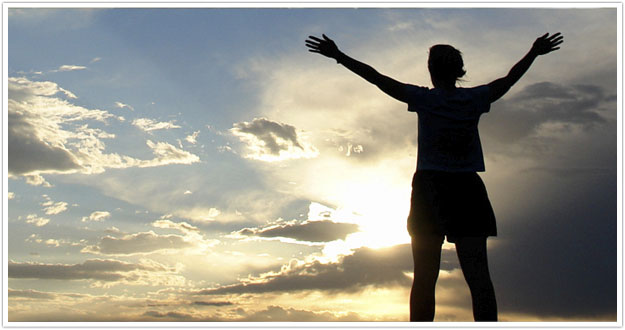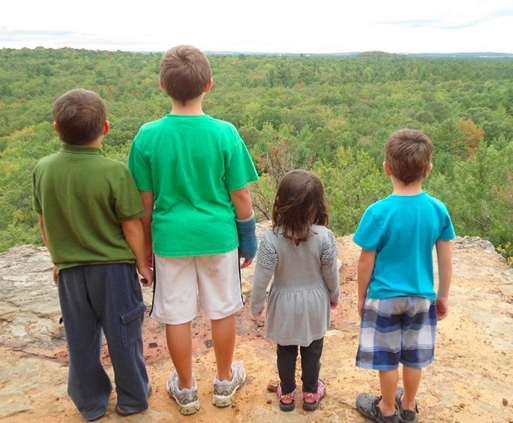Tune in to Everything
October 2013
By Blaine Howard

The greatest foe a writer must face isn’t actually writer’s block; it’s a much more nefarious enemy: “rut syndrome.” Every brand has its own voice, and every project has its own tone. But after you’ve thrown a few thousand words at something, it gets harder and harder to write anything original while staying within these established parameters.
Familiar phrases start to reappear with increasing regularity, and you may find yourself unopposed to using them again. “Tried and true” becomes “tired and clichéd.” Buzzwords turn into buzzkill. The walls of your rut begin to close in on you, and you get the feeling that your best work might lie behind you, at least in this particular field.
So how can you claw your way out of this rut while staying in your groove? By looking outward rather than trying to dig deeper into yourself. And by “outward,” I don’t mean industry blogs or field-related resources. Sure it’s important to stay informed, but often the fresh perspective that fuels a new direction in your writing will come from unexpected directions. The key is to turn your attention toward those unlikely sources – and let the creativity flow.
Living on “high-receive”
One of the creative sparks for this very article has been bouncing around in my head for a couple of years now. It’s an off-the-cuff bit of writing that appeared on the Facebook page of Fame Foundry’s chief architect, Kenneth Vuncannon. The title alone speaks volumes about why I enjoy working with Ken: “On creative design (and in stern defense of all creative people)”.
In this piece, Ken wrote, “Not even designers know where all the inspiration comes from, but they are the ones who sacrifice normal life and choose to live constantly on high-receive, subjecting their brains to everything in this world in the name of creativity.”
That bit about high-receive struck me at the time, and it remains with me still, informing my work process day in and day out. And here I was just casually spending five minutes on Ken’s page, looking at pictures and catching up – probably drawn to his profile by some quip that made me laugh.
Ken’s brief paragraph in praise of designers – “they are the ones” who draw inspiration from “everything in this world” – also serves as a great piece of advice for anyone wishing to challenge their own creativity: look outside yourself. Look everywhere, all the time. Be ready for that happy coincidence. Train your mind to make connections that can grow into your next great work.
The more you think like this, the more your ideas will begin to flow from moments that might otherwise slip by as ephemeral instances of random beauty or humor. And the greater the chance that something original can find its way into one of those dry assignments that threatens to drag you down into the rut.
Here are a few examples from my own efforts to stay tuned in to the greatness around us:
Crazy people
Here’s a piece that has stuck with me for some 20 years. I was at my grandmother’s for the weekend with the rest of my family, home from college, sometime in the early nineties. Grandma Whipkey’s was a fine place to visit, overflowing as it was with homemade cookies and cable TV – HBO to be specific. We were flipping through channels when I stopped for a few minutes on something called “Crazy People,” a movie starring Dudley Moore and Paul Reiser as advertising pitch men.
I hadn’t heard of the movie and had no interest in the premise. But the part that happened to be showing was Dudley Moore’s pitch for Volvo. The tag? “Volvo: Boxy but good.”
As a college kid only just discovering the verbal agility and wit of Monty Python, this bit struck me as funny. All these years later, I think of this clip often. There’s a bit right after it as well where Moore argues that he and his fellow execs should “level with the people.” Reiser’s reply is, “We’re in advertising. We can’t do that.”
It’s a sharp piece of satirical writing – one that serves as a great reminder that marketers can – and should – tell the truth.
A reverent – and irreverent – obituary
Here’s an opening line that has never before been used in an obituary: "If you're about to throw away an old pair of pantyhose, stop."
You read that right. But such a goofy first line couldn’t possibly be part of a well-written obituary, could it? Surely this is a misguided attempt at humor that falls as flat as a vulgar joke in church.
Wrong. This one, written by the family of Mary Agnes Mullaney, a Milwaukee native who recently passed away at 85, hits it out of the park. There isn’t a hint of typical dry obit tone, but the piece overflows with joy, grief, dignity and every other emotion that naturally occurs when a well-loved person passes away.
Take this passage, which recounts lessons to live by, as demonstrated by Mary the gentle firecracker:
“Go to a nursing home and kiss everyone. When you learn someone's name, share their patron saint's story and their feast day, so they can celebrate. Invite new friends to Thanksgiving dinner. If they are from another country and you have trouble understanding them, learn to ‘listen with an accent.’
Never say mean things about anybody; they are ‘poor souls to pray for.’
Put picky-eating children in the box at the bottom of the laundry chute, tell them they are hungry lions in a cage, and feed them veggies through the slats.”
The purpose of an obituary is to announce someone’s death and convey a few carefully culled facts about the life that was lived. This piece turns the conventions of this medium upside-down and, in doing so, transforms it into something every obituary should be: a very human, deeply powerful ode to grief and celebration.
This one inspires me to look again at any dry or unwelcome writing task set before me. There is always a new and different way to approach any assignment, no matter how seemingly routine.
Kids run roughshod through ruts
If you want a prime example of setting your brain to “high-receive,” my sincere hope is that there are children in your life. My wife and I have four kids, ages two, five, seven and nine. I call them the Popcorn Gang – they’re packed with energy and exploding all over the place with creativity (among other things).

One of my favorite bedtime storytelling techniques is to turn them loose on a basic comic book plot and let them fill in the fun bits. They are the crusaders for justice, and they choose their powers. My main responsibility is voicing a made-up villain (Rovoltin’ Molten is a favorite; he controls lava and maintains a sinister lair deep in a volcano) and subjecting the baddie and his minions to my kids’ incredible feats of bravery and might. My evil mastermind will try to take over the world; this much is certain. But make no mistake, he will be utterly defeated by the end of the tale.
It’s always a big gulp from the fire hose of originality. If I didn’t set limits on the numbers of powers, talking animal sidekicks and tricked out vehicles, the stories would last until dawn. One example among hundreds: I’ve never heard of a superhero who shot blue popcorn from his knuckles before, but darned if young Captain Abel didn’t thwart a whole battalion of lava soldiers with this devastating ability. They’ve come up with enough plots and powers over the years to populate a whole new superuniverse.
My daughter Evangeline, our youngest, will be three in a couple months. The other day she had this revelation for my wife while they cuddled up and looked out the window at a gorgeous late summer day:
“Mommy, you are the flower and I am the green grass. Cole is the raincloud and Abel is the raincloud and Gibson is the raincloud and Daddy is the sun. Grandpa is the blue sky and Grandma is the green grass with me.”
So yeah, that’s unquestionably my favorite thing of the week. I was amused to note that her brothers are the rainclouds, while bursting with joy over my status as the sun (all the while realizing that I’ll undoubtedly take a turn as a raincloud in 10 years or so).
Later on, because I spend a lot of time each day in the marketing world, I thought about what a great moment it would make in a campaign. Not a cynical moment designed to manipulate emotions. Not a too-cute, overdone moment that feels like neon unicorns prancing on cotton candy clouds. But a light, authentic moment that could find a natural fit with any number of family-oriented brands. I may never wind up using it, but into the hopper it goes.
Kids are at the heart of so many memorable ads, from Volkswagen’s Darth Vader Kid to AT&T’s recent series of ad-libbed interviews. And it’s not hard to understand why: Kids don’t know from ruts. You want a fresh perspective on something? Run it by a human under 10.
Storing up genius
Staying open to unlikely sources of inspiration doesn’t always come naturally, but there’s no reason why creativity and structure can’t go hand in hand.
Keep a file of intriguing items you run across. Bookmark video clips, images or articles that strike your fancy. If you have kids, pets or friends who do things that make you shake your head for any number of reasons, by all means fill a notebook with their quotes and stories.
By the way, if you don’t end up using anything in some capacity (you will, but let’s say you don’t), there is still a tremendous benefit to be found in a life spent deliberately looking outward in pursuit of the good stuff. In the end, it’s not just about helping yourself create better work and serve your clients better. That is simply an inevitable benefit to the habit of tuning into greatness. But you can be sure that as you expand your horizons, your work will be distinguished not by its similarity to other campaigns or articles in the same field but by the part that stands out as original. Your fresh voice and your sideways angle are what will set your writing apart and keep your creativity flying high, safe from the depths of the dreaded rut syndrome.
So here’s to all those disparate bits of stimulation that will make your work better, stronger and more inventive. Stay tuned – to everything – and be inspired.
Blaine Howard is a writer and editor with more than 20 years of experience crafting the art form of the written word in a wide variety of fields, from marketing and advertising to nonprofit and pop culture. Blaine currently serves as associate editor for Fame Foundry.